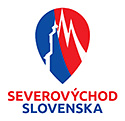Address: Kežmarok Information Agency, Main Square Nr. 64, 060 01 Kežmarok
E-Mail: info@kezmarok.sk
Phone: +421524492135
MEMORIAL PLAQUES
Kežmarok has had great historical and human potential since time immemorial. People turned thoughts into words and words into deeds that became habits. And it was the habits of the ancestors that shaped the character of the town, which in the course of time predetermines also our future.
Walking along the historic path, we find many memorial plaques next to the ones set long ago. Let us, at least, introduce youto the most important of them.
MOST IMPORTANT MEMORIAL PLAQUES ON THE HISTORIC PATH
At the entrance to the Wooden Evangelical Articular Church, there is a plaque setat the occasion of the 500th anniversary of the Reformation (1517 – 2017) and the 300th anniversary of the construction of the Wooden Articular Church (1717 – 2017).
The nearby building of the Evangelical Lyceum is dotted with memorial plaques. And rightly so. After all, the most important personalities of the last centuries studied in this well-known school. On one board it reads: “Here worked as rector and professor of the lyceum the writer and playwright Ján Chalupka (1818 – 1824).”
The interior of the New Evangelical Church also guards a memory of our ancestors. A sign visible from the street has the name Jur Hronec (1881 – 1959), who is considered to be the founder of Slovak higher education. The sign is located just beside the road on the facade of the A. Cíger Elementary Art School.
The town hall boasts an epitaph, but the important Genersich family is connected to the house on the Main Square Nr. 14.
The Redoubt is reminiscent of the revolutionary period. It says: “At this place stood a makeshift tribune from which the voice of freedom was heard in November 1989 (1989 – 2009).”
Although the house, in which the Museum of Interior Styles is located, remembers a lot, Martin Rázus (1888 – 1937) found his home in the house on the Main Square Nr. 37 during his studies in Kežmarok.
Almost opposite the house Nr. 49 is a plaque with the text: “During 1869-70, the greatest Slovak poet, Pavol Országh Hviezdoslav (1849 – 1921), lived in this house while he studied here.
Just two houses down from the Marian Church is another plaque with the name of a giant, of whom the people of Kežmarok are still proud. Dávid Frölich (1595 – 1648) was an astronomer, mathematician and geographer. In 1640, Emperor Ferdinand III awarded him with the title of Imperial-Royal Mathematician.
In the entrance tower of the castle is a memorial plaque dedicated to Dr. Oskar Szelényi, who founded the Kežmarok Museum at the castle.
In the Old Market we can read these words: “In this house lived in 1912 – 1913 these Slovak students of the Kežmarok Lyceum and business school: Matej Jančo, Ján Uhrík, Miloš Mičík and Ferdinand Čatloš – members of the secret association MOR HO!, who were expelled from their schools in Hungary for their national persuasions.”
Next to the Basilica of the St. Cross and the Renaissance belfry now stands the building of the Catholic Folk School, which was attended from 1815 to 1818by important mathematicians and brothers Otto B. Petzval and Jozef M. Petzval, who also contributed to the improvement of optics.
The historic cemetery is full of plaques, but they are not directly memorial plaques, but rather epitaphs. In the nearby park is a Holocaust memorial with a plaque dedicated to the memory of the Jews of Kežmarok and the Great Synagogue, which stood on this site during the years 1883 – 1962.
AND THAT’S NOT ALL
Dozens of memorial plaques which have not been mentioned point to Kežmarok’s rich past. They are scattered throughout the town on facades and hidden in the buildings. Every single recorded name or event on them makes Kežmarok very proud.





